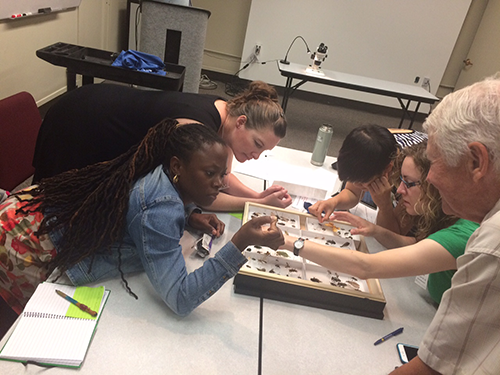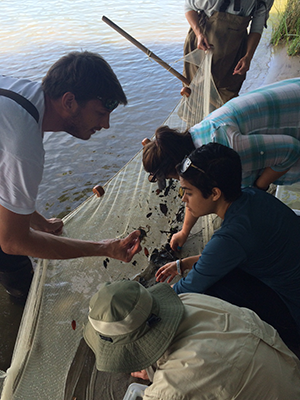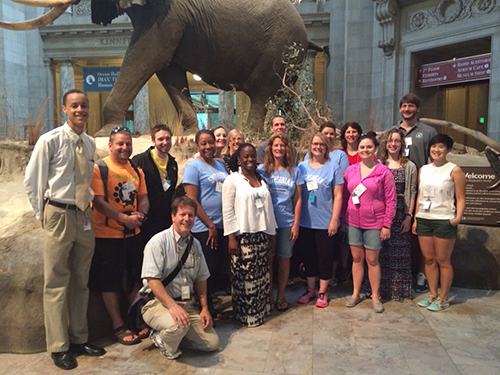It's a Bird, It's a Plane, It's a Bad Biology Pun!
If you have ever closely studied members of the phylum Echinodermata, you might ponder, "How can I tell a male sea cucumber from a female?" In this case, you would be prudent to accept the wisdom of accomplished scientist of echinoderms Dr. David Pawson who implores, "First you must ask its name." Humorous bits such as this were woven into a week of intensive science exploration that took place at the SSEC's 2015 Biodiversity SSEAT. Representing a spectrum of grade levels, 15 STEM instructors from as far as San Jose, California, traveled to the nation's capital to participate in a weeklong academy designed to introduce them to the work done by scientists who study the diversity of life, engage in dialogue with content experts and fellow educators, and develop pedagogical techniques that facilitate a hands-on, inquiry approach in teaching.

The week proved a stellar success, leaving instructors with sentiments such as, "This week will leave an everlasting impact on my teaching. This has recharged my 'ADP', sorry for the biology joke. I loved this week and I am so thankful for all the dedication all of you provided for my benefit! Thank you so much!" and "This by far has been one of the greatest experiences and professional development I have attended. I feel that I am leaving inspired and ready to use the resources and knowledge I have gained this week."

Over the course of the week, the teachers were able to engage in activities such as organizing specimens of the National Insect Collection (depicted above),surveying the biodiversity of the Chesapeake Bay Watershed by seining (depicted to the right, during which I was pinched by a white-tipped mud crab), collecting earthworms at the Smithsonian Environmental Research Center and identifying the consequences of their invasive status, and dissecting mud dauber nests under the direction of Robert "Dr. Bob" Matthews.

This experience was invaluable for me as well. Being a Cheverly, Maryland native, I have been near the Smithsonian for the greater portion of my 19 years. However, it never dawned on me that the Smithsonian Institution's facilities are home to some of the greatest collections in the world such as the 35 million specimens of the Insect Collection. The amount of tangible materials the National Museum of Natural History alone contains is only trumped by the expanse of knowledge shared between the presenters of the academy. For instance, Nate Erwin, the academy facilitator, is something of a celebrity at the Smithsonian. He is a self-denoted "free-lance entomologist" who, after managing the Smithsonian Institution's Insect Zoo for two decades, currently works on stink bug research for the Unites States Department of Agriculture, leads groups of high school students to the Peruvian Amazon for Amazon Rainforest workshops, consults with clients on habitat rehabilitation, consults with museums on exhibit development, and lectures on insect natural history for organizations such as the Smithsonian Institution's Associate Program. Amidst this intensive involvement, he still finds time to put forth such gems as "a dung beetle walks into a bar and asks, 'Is this stool taken?'" In short, the faculty chosen to present this week was nothing short of excellent.

I am grateful to have had the singular opportunity to see STEM teachers' eyes light up upon introduction to the structurally colored scales of Morpho butterflies(as would any of their students, I'm sure). They delighted in every activity with the thought of implementing each in their own classrooms.

Over the course of the Biodiversity SSEAT, I stood witness to the beginning of what I know will be the wide dissemination of scientific information and concepts that began with the mission of the SSEC to transform the learning and teaching of science for all students in the United States and throughout the world and I am indebted to the SSEC for the experience.
